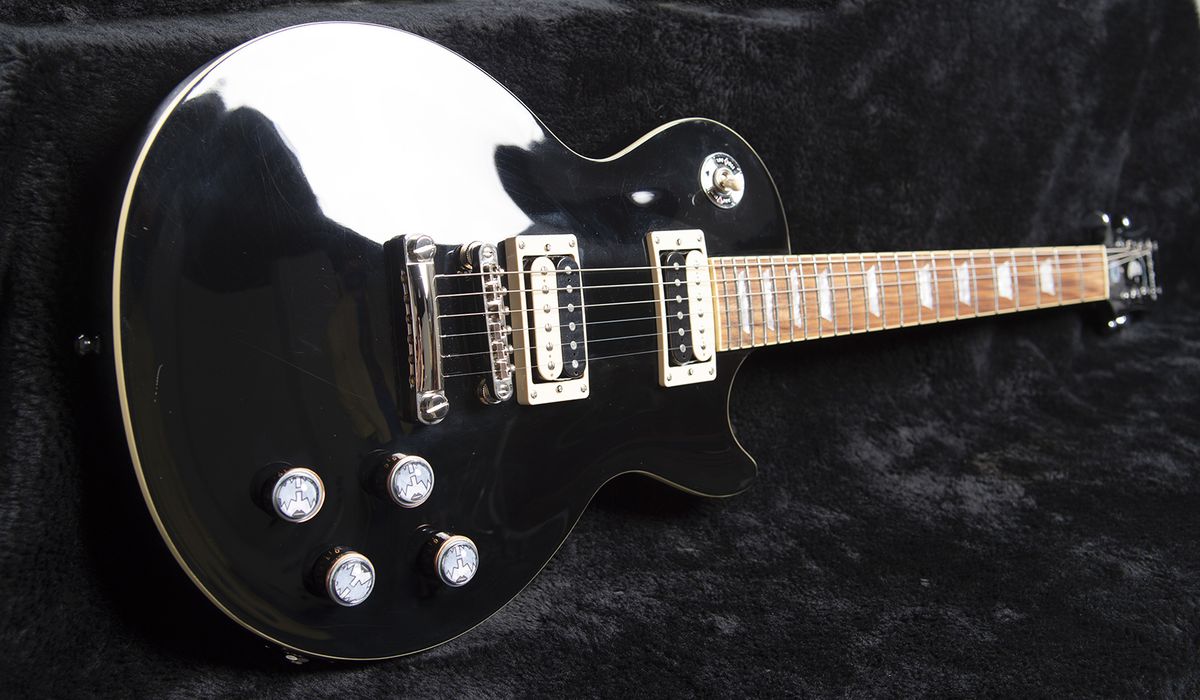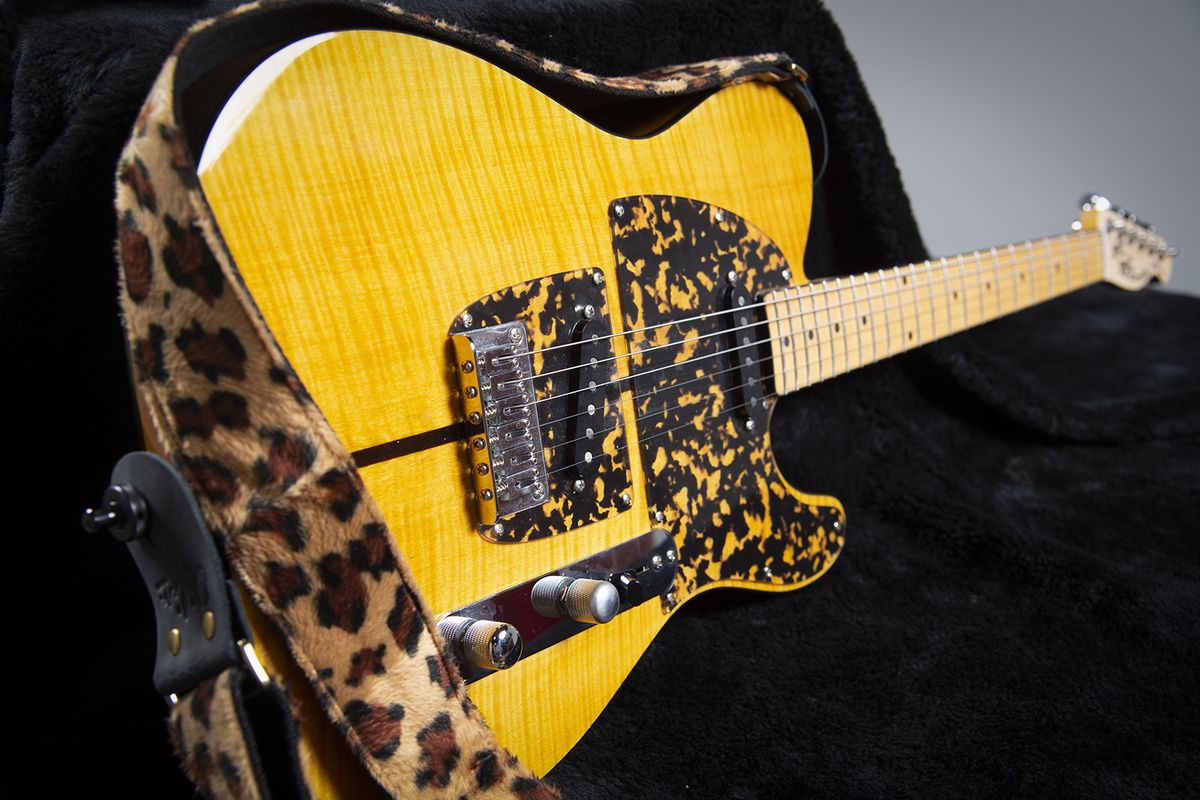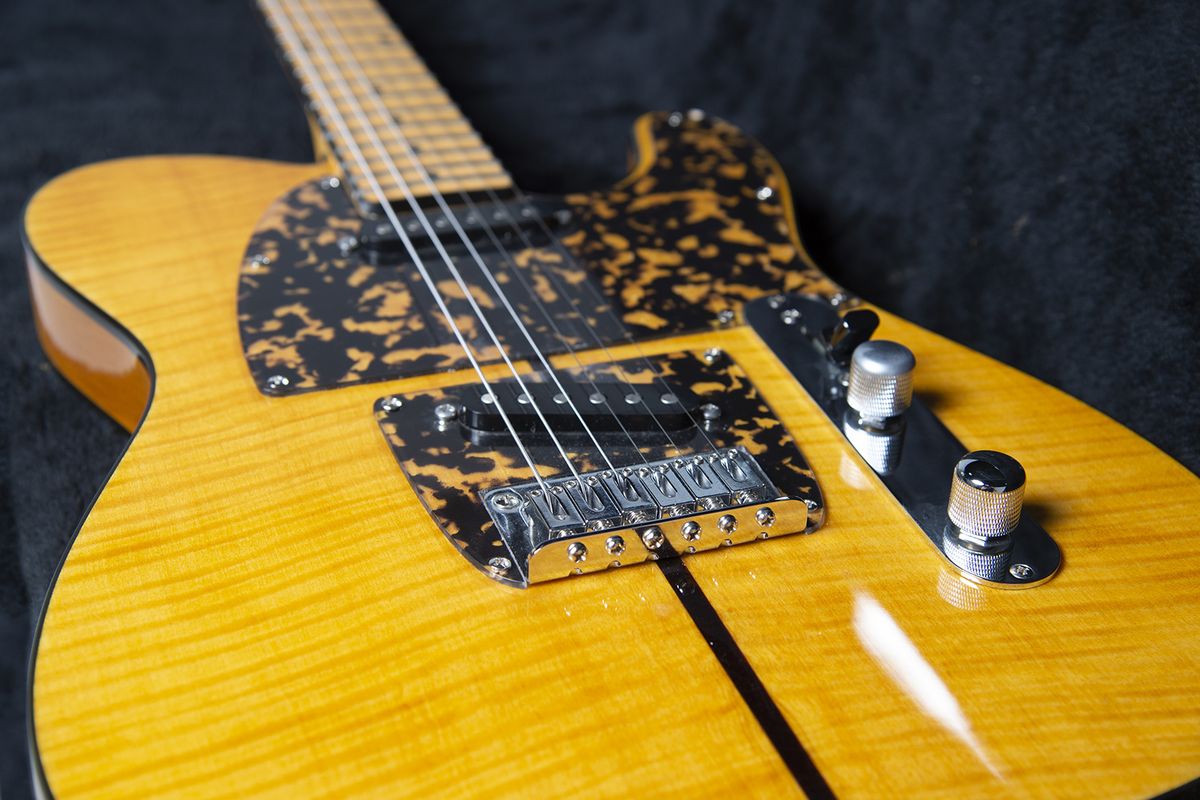This column reflects the opinion of the writer. Learn about the differences between a news story and an opinion column.
Working with a Spokane guitar shop to re-create Prince’s priceless guitar shows another side of the Artist’s eccentric tastes

Prince loved playing eccentric and wild guitars – often custom instruments designed to make as much of a visual statement as they did a musical statement.
But his favorite guitar couldn’t be more traditional-looking. Telecaster guitars have been a huge part of rock and roll since the 1950s and are instantly recognizable with iconic rockers from Keith Richards to Bruce Springsteen. With Prince’s fondness for not only eschewing but openly flaunting tradition, it seems more than a little odd that his instrument of choice was, well, kinda boring.
Especially for a boundary-breaking musician who once changed his name to an unpronounceable symbol while embodying a style that often pushed gender and racial norms. Yet, there he was primarily playing a guitar that looked like it had been borrowed from Buck Owens.
That’s the thing. The Artist’s go-to guitar wasn’t exactly what it seemed.
Most people assume it was a Fender Telecaster. It wasn’t. It was a Hohner Madcat, which – at first glance – seems very much like a simple tele copycat guitar. But there was more going on there than that.
The Spokesman-Review’s Editor Rob Curley owns this replica of the Telecaster-style guitar used by the artist Prince during his career. Curley is a guitarist and fan and recreated the guitar on a budget, using a cheap Telecaster knock-off which he then upgraded with many replica parts. (Jesse Tinsley/THE SPOKESMAN-REVI)
It was originally designed and made in a Japanese guitar factory in the early 1970s initially released under the name H.S. Anderson Madcat. They weren’t cheap knockoffs. In fact, they were actually kinda pricey for the time because of the materials, hardware and care that went into building the handmade guitars. Adjusted for inflation, the Madcats cost the equivalent of more than $1,000.
The guitars were made primarily of sen ash and a maple top – but with a distinct walnut strip through both the body and neck of the guitar. Though the Madcat’s body shape has a very telecaster look, the guitar’s bridge is like a hardtail Stratocaster with neck and bridge pickups that also are much more like a Stratocaster.
Then there was the part that initially caught Prince’s attention: a pickguard with a leopard print that can be seen on other parts of the guitar, as well. It’s these leopard elements that are often attributed with the guitar’s Madcat name.
At some point, German-based instrument producer Hohner bought the rights to the H.S. Anderson Madcat guitars and continued to have them produced in the same Japanese factory, only with a different name on the headstock — everything else about the guitar was exactly the same.
Those original Madcats are rare.
Fewer than 500 were initially made before a lawsuit from none other than Fender, which basically stopped production of Madcats. Prices for those instruments are all over the place, but if you want an original, plan on spending about what a new car costs. Even modern reissues made in the last decade or so will typically fetch north of $2,000 on the used market.
So, how’s a Prince fan in Spokane, who also happens to be paid a journalist’s salary, get a little guitar goodness that’s reminiscent of his Royal Badness?
It’s complicated. But possible.
You’re going to have to put in a little effort, not be intimidated by a whole lot of Google searches and be willing to buy lots of different parts from all over the planet. And you should have an Etsy account.
The biggest part is finding an affordable guitar that shares lots of the same attributes as Prince’s beloved Madcat guitar so that you have a good starting point. Believe it or not, the interweb is going to have many options. Almost certainly more than you think. It’s just that most of them feel fairly sketchy.
Because they are sketchy. And no one wants an unexpected customs agent showing up at their door.
This is where German-based music retailer Thomann enters the picture.
Thomann is now one of the world’s largest, and most respected, online musical instrument stores. Thomann has its own brand of inexpensive guitars called Harley Benton, which are mostly produced in China and other Asian countries. Once produced, the guitars are then exported to Germany, where Thomann checks them for quality, then prepares them to be shipped to customers.
When you buy a Harley Benton guitar, it’s going to be shipped to you from Germany … so plan on waiting a while before you get to play Purple Rain on it.
There is a Harley Benton guitar called the TE-80 NT Deluxe Series. Reviews are notably mixed. People either love it or hate it. Most really love it. But all agree that it sure looks a whole lot like Prince’s Madcat guitar. As in an almost exact copy.
For $188. Plus shipping costs, which are reasonable.
The problem often is that these exact models are often sold out. The Thomann website currently says a new shipment is expected in 6-8 weeks, and that doesn’t include the time it takes to ship them to the United States
It’s all of that shipping that drives some people crazy about buying a Harley Benton guitar. But if a good one ends up at your door – unscathed from its myriad of journeys from different continents across multiple oceans – it’s also a steal for an instrument of this quality.
However, you’re still going to need to make at least a few cosmetic adjustments if you want it to really look like Prince’s guitar – and a few bigger tweaks if you want the guitar’s sound and performance at the next level.
The first change you’re going to want to make is the pickguard and a few of the missing matching leopard elements. The pickguard on this Harley Benton guitar is fairly close to the one on Prince’s Madcat, but not close enough. At least not for me.
A company in England called Scratch-It makes custom guitar pickguards. One of its biggest sellers is a “Prince Homage” kit that not only includes an incredibly close pickguard to what was on Prince’s guitar, but also the other matching leopard plates that were on other parts of his guitar. Scratch-It has a version of this set that is already pre-sized to fit the Harley Benton guitar perfectly.
This all will set you back about $50. Totally worth it.
Then you’ve got the headstock that says “Harley Benton.” Interestingly enough, it’s designed in a way that has no lacquer on it, meaning it’s extremely easy to sand off the brand logo that clearly wasn’t the one on Prince’s guitar.
This is where you come across a bit of an ethical decision. The decals that are on guitar headstocks are typically called “waterslides” for how they are applied to surfaces. These headstock logos are important because they can actually affect the perceived value of a guitar.
Some guitar restoration websites offer reproductions of different brands’ logos for those who are fixing up an older guitar that may have been damaged or needs fixed for another reason. Waterslides for guitars typically run for $10-$20. They’re easy enough to find on the web, or you can go straight to Etsy or eBay.
The problem with these waterslides is if a “tribute” guitar like the one I was building ends up with someone else who might think it’s a real H.S. Anderson Madcat … when it’s not. So, here’s my advice: Just don’t do it. The logo on my Prince tribute guitar uses the same fonts as the original guitar from the 1970s, but instead spells out H. Benton Madcat. It definitely feels like Prince’s guitar, but this helps clarify that it isn’t.
Thus no confusion. Or deception.
The only other cosmetic option you might want is a replica of Prince’s leopard guitar strap. This is where Etsy really comes in handy. And let’s be honest, if you’ve come this far on a project like this, you’re soon going to own a wild guitar strap to go with it. The strap I got, from Thailand, can be yours for about $45.
Those weren’t the only changes made to my version of the guitar. These are just the ones to refine its looks.
There also were a few changes to help with its sound and playability. That being said, they certainly weren’t mandatory. The guitar really did sound very good straight out of the box and played really nicely, as well.
The stock pick-ups in the Harley Benton were switched out for some high-end, hand-wound Lollar pickups. Loller is a family-owned company based in Tacoma that makes some of the best pick-ups in the world. The tuners were replaced with Grover locking tuners. All of these modifications came to about $250.
The last adjustment was something few would see: a plate on the back of the guitar with Prince’s symbol and the years of his life (about $18 from Etsy).
It’s important to note I’m not handy enough to put together all of these pieces. But I know someone who is.
I’ve written before about how Taylor Roff from the Senator guitar shop here in Spokane has helped me with these types of projects in the past. He’s the one who made all the technical parts of this Prince project happen.
Roff is currently in the process of moving his quirky guitar shop but can still be reached via the shop’s website.
None of this will make you play like Prince. Or look like Prince.
But it sure is fun. And all of your friends who play guitar are going to be envious.
They might even go crazy.
The Spokesman-Review editor Rob Curley is an admitted guitar nerd and can be reached at robc@spokesman.com.
















